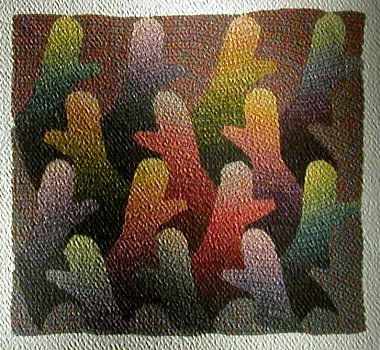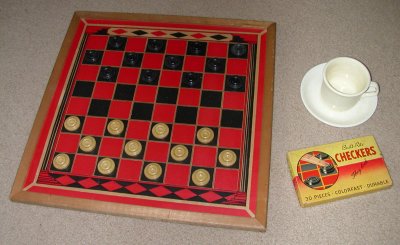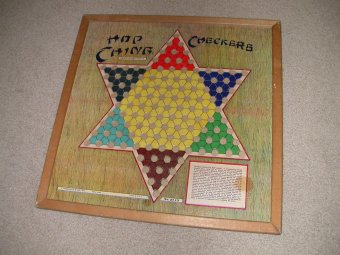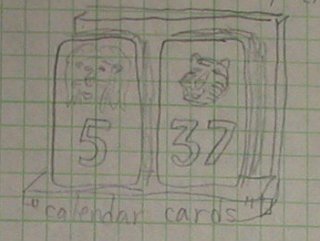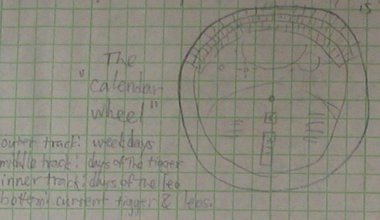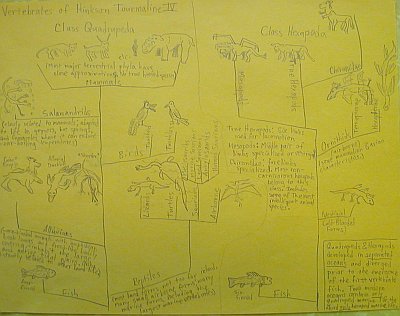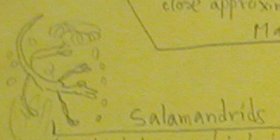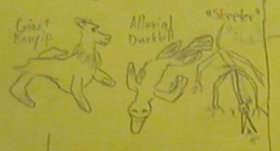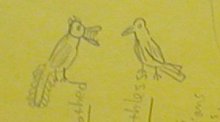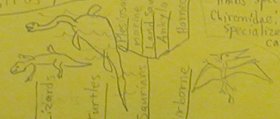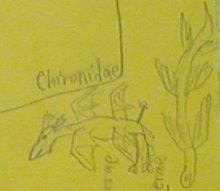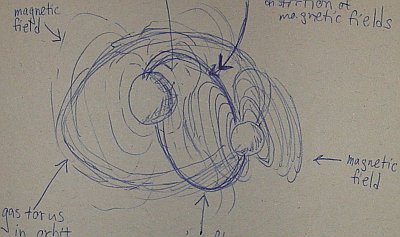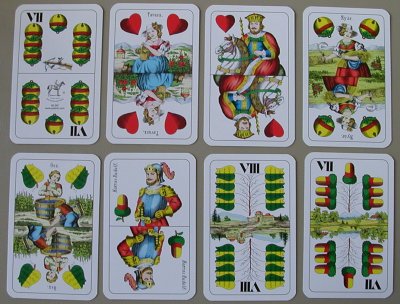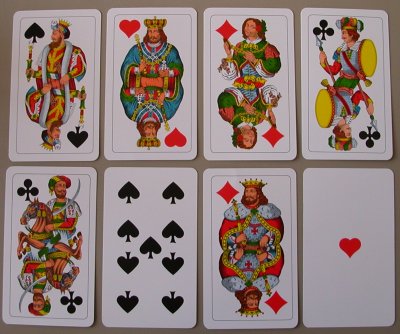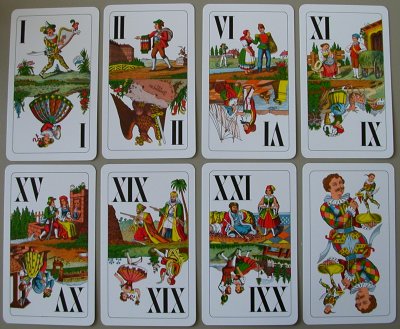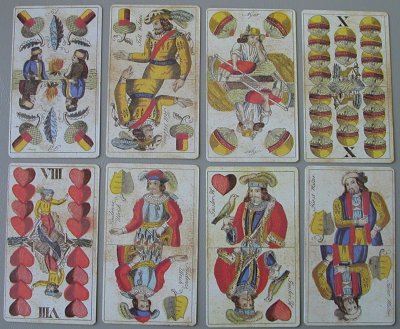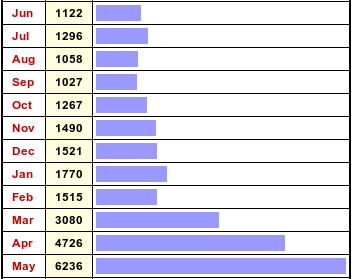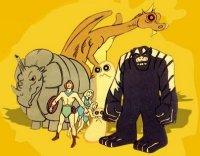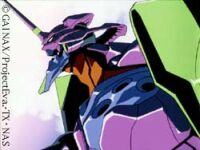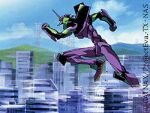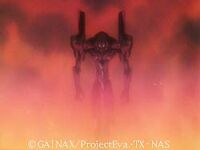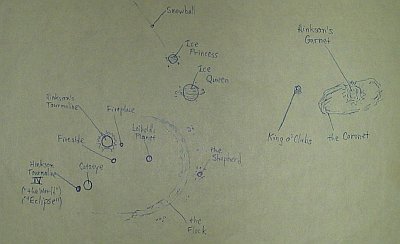
Back in the 70s, in my junior high and high school and early college years,
I wrote a thick sheaf of science fiction stories, all set in the same fictional future history. The names of certain worlds kept popping up in these stories again and again, among them a human-colonized planet called Hinkson
Tourmaline IV.Some years later, around age 30, I began fleshing out this world in detail. Hinkson
Tourmaline IV, the entire Hinkson's Star system. I was armed with my old college physics textbook, and a college-level astronomy textbook. I consulted with a friend who had been a Ph.D. candidate in physics. I filled up a thick file folder, page after page covered with equations and calculations. By the time I was finished, I had created a star system of my own.
Hinkson's Star is located 41.07 light years from Earth. Declination:
36° 28' 3.7". Right ascension:
14h. 47 m. 12.1 s. It was first catalogued in 1908, as
BD+36°7891, in the
Bonner Durchmusterung.
Hinkson's Star is a physical binary. Its two components are
BD+36°7891A, "Hinkson's Tourmaline," a whitish-yellow main sequence star; and
BD+36°7891B, "Hinkson's Garnet," a red subgiant. The mean separation of the two stars is
5.5X10^9 mi. (59 AU); eccentricity of orbit, 0.24; period of revolution, 909.6 Earth years. The visual magnitude of Hinkson's Garnet as seen from Hinkson's Tourmaline at mean separation is -15.0, which is 8.3 times as bright as a full moon on Earth; visual magnitude at periastron, -15.6.
Hinkson's Tourmaline (BD+36°7891A): Spectral class, F7. Surface temperature,
7050° K. Absolute magnitude, 4.39. Mass
(Sol = 1.0), 1.0. Luminosity
(Sol = 1.0), 1.33. Diameter, 750,000 mi.
Hinkson's Garnet (BD+36°7891B): Spectral class, M3. Surface temperature,
3300° K. Absolute magnitude, 7.66. Mass
(Sol = 1.0), 3.0. Luminosity
(Sol = 1.0), 0.067. Diameter, 1,500,000 mi.
The Hinkson's Star system was first explored in 2172 by the H.H. Hinkson expedition. Their ship, the USS Skylark, was propelled by a Bussard fusion ramjet drive. The Hinkson expedition spent five years exploring the planetary system of Hinkson's Tourmaline; they made planetfall or orbital observation of most of the planets and moons, and much of their exploratory work has yet to be repeated or extended. Note, the Hinkson expedition, at a distance of over 40 light years, took place at a time when most human explored or colonized worlds were within 20 light years of Earth.
In 2208 the Alyson Leibold expedition executed a flyby stellar survey of the Hinkson's star system, aboard the EESS Alèxandre Humboldt, driven by a Bussard plenum-disruption ramjet. Their data was returned to Earth via maser beam; the Leibold expedition itself never returned to Earth, and must be presumed lost in the void of interstellar space.
Colonization of Hinkson Tourmaline IV began in 2270 with the arrival of a Solar Federation union expedition on the SFSS
E. Grey Bigelow, equipped with a Dean plenum-disruption rotolinear drive and a Müller paralight-transition drive.
Hinkson's Tourmaline has nine planets in eight planetary orbits, as follows:
1. Fireplace. Diameter: 2500 mi. Distance from primary: 28,000,000 miles. Period of revolution: 60.3 days. Sidereal period of rotation: 60.3 days. Orbital eccentricity: 0.045. Volume (Earth = 1): 0.03. Mass (Earth = 1): 0.04. Density (g/cc): 7.1. Surface gravity (Earth = 1): 0.41. Albedo: 0.15. Mean subsolar surface temperature: 1340° K. Number of satellites: 0.
This small planet orbits a mean distance of only 28 million miles from its primary, coming at periastron to within 26.74 million miles. Fireplace always keeps the same face turned toward Hinkson's Tourmaline, and temperatures on its sunward side reach upward of
1340° K. (2000° F.) With most of the lighter elements having long since been driven off by solar heat, Fireplace is extraordinarily dense— in fact, it possess a dense but shallow atmosphere, consisting of mercury vapors, and on the dayside, of lead vapors as well. This atmosphere is only about 300 meters deep— thus even steep hills project above the atmosphere. Atmospheric circulation is a simple Hadley cell, with a sharply marked thermocline between the hotter upper atmosphere which moves toward the night side, and the less hot returning lower atmosphere.
2. Fireside. Diameter: 3800 mi. Distance from primary: 43,000,000 miles. Period of revolution: 114.8 days. Sidereal period of rotation: 114.8 days. Orbital eccentricity: 0.02. Volume (Earth = 1): 0.11. Mass (Earth = 1): 0.11. Density (g/cc): 5.4. Surface gravity (Earth = 1): 0.47. Albedo: 0.06. Mean subsolar surface temperature: 860° K. Number of satellites: 0.
An airless, cratered ball of rock which keeps the same face always turned toward its primary, Fireside resembles the "older" astronomical picture of the planet Mercury in many respects. The dayside approaches 860° K., while the nightside stays near absolute zero.
3. Leibold's Planet. Diameter: 9100 mi. Distance from primary: 67,000,000 miles. Period of revolution: 223.3 days. Sidereal period of rotation: 8.27 days. Orbital eccentricity: 0.0038. Volume (Earth = 1): 1.51. Mass (Earth = 1): 1.35. Density (g/cc): 4.9. Surface gravity (Earth = 1): 1.02. Albedo: 0.35. Mean subsolar surface temperature: 400° K. Number of satellites: 0.
Somewhat larger than the Earth and rotating slowly due to tidal braking by Hinkson's Tourmaline, Leibold's Planet is named after the ill-fated second Earth expedition to the star system. However, its atmosphere, a thin reducing atmosphere (150 mm Hg. or 0.20 Earth atmospheres) of nitrogen, methane, ammonia, water vapor, and carbon dioxide, does
not resemble that of Venus. The reason for this is that Leibold's Planet is large enough to sustain a molten core and plate tectonics, thus most of the free carbon became locked into surface minerals and carried through plate subduction to the asthenosphere or upper mantle of the planet.
4. Catseye/Eclipse The fourth orbit around Hinkson's Tourmaline is occupied by a double planetary system consisting of two planets, Catseye (diameter 17500 miles) and Eclipse (diameter 7100 miles). The two planets, separated by a mean distance of 35000 miles, rotate about their common center of mass every 13.738 hours. The smaller planet, Eclipse, is relatively earthlike, and habitable for human settlers.
More on this double planet system tomorrow.5. The Shepherd. Diameter: 4700 mi. Distance from primary: 238,000,000 miles. Period of revolution: 1495 days (4.09 years). Sidereal period of rotation: 23.0 hours. Orbital eccentricity: 0.0095. Volume (Earth = 1): 0.21. Mass (Earth = 1): 0.18. Density (g/cc): 4.6. Surface gravity (Earth = 1): 0.50. Albedo: 0.07. Mean subsolar surface temperature: 190° K. Number of satellites: 23.
As with our system, the system of Hinkson's Tourmaline has an asteroid belt inside the orbit of its first Jovian planet. However, the largest "asteroid" is in this case larger than our planet Mars, a colder version of which it in fact resembles. The planet, dubbed "the Shepherd," superintends the smaller bodies which are naturally enough termed "the Flock." The Shepherd has orbiting itself no less than twenty-three moons; there are also sizeable concentrations at each Trojan point. Moreover, the Shepherd has almost totally cleaned out the resonant gaps among the Flock which correspond to orbits whose period is a rational multiple of the Shepherd's period; the phenomenon is similar to the Kirkwood gaps in our own asteroid belt, but much more pronounced, so that, seen from several astronomical units above the ecliptic, the Flock looks rather like a giant version of the rings of Saturn, but even more striking.
6. Ice Queen. Diameter: 42000 mi. Distance from primary: 437,000,000 miles. Period of revolution: 10.2 years. Sidereal period of rotation: 14.4 hours. Orbital eccentricity: 0.03. Volume (Earth = 1): 148.7. Mass (Earth = 1): 35.1. Density (g/cc): 1.3. Surface gravity (Earth = 1): 1.25. Albedo: 0.40. Mean subsolar surface temperature: 120° K. Number of satellites: 8.
The first Jovian planet in the system, Ice Queen presents marked atmospheric bands, most colored white or faint grey. The planet possesses a faint ring, and eight known moons, named after the kings and queens of the classical card deck (David, Alexander, Charles, Caesar, Pallas, Argine, Judith, Rachel).
7. Ice Princess. Diameter: 25000 mi. Distance from primary: 863,000,000 miles. Period of revolution: 28.3 years. Sidereal period of rotation: 18.7 hours. Orbital eccentricity: 0.035. Volume (Earth = 1): 31.4. Mass (Earth = 1): 7.99. Density (g/cc): 1.4. Surface gravity (Earth = 1): 0.80. Albedo: 0.40. Mean subsolar surface temperature: 85° K. Number of satellites: 4.
The small Jovian planet, Ice Princess, resembles its larger neighbor except that its atmospheric bands are less strongly marked. It too has a faint ring system, and four moons, named after the jacks of the card deck (Ogier, Judah Maccabee, La Hire, Hector).
8. Snowball. Diameter: 1500 mi. Distance from primary: 1,263,000,000 miles. Period of revolution: 48.5 years. Sidereal period of rotation: unknown. Orbital eccentricity: 0.07. Volume (Earth = 1): 0.007. Mass (Earth = 1): 0.001. Density (g/cc): 1.0. Surface gravity (Earth = 1): 0.034. Albedo: 0.20. Mean subsolar surface temperature: 75° K. Number of satellites: 0.
The object named Snowball remains something of an enigma. It seems to be composed largely of ice, frozen methane, and dust and gravel. It would seem to be perhaps a piece of cometary matter, if not for its large size. It has not yet been subjected to individual investigation.
Hinkson's Garnet, at a mean distance of 5.5 billion miles from Hinkson's Tourmaline, is circled by an asteroid belt called
the Coronet; and further out, a large, dark, rocky planet called
King o' Clubs. These have not yet been examined close up.
There you go, a star system of my own! At one time I calculated this all out in gory detail, though please don't ask my aching skull to revisit those calculations 20 years down the road. You'll notice my star system is in some ways very broadly similar to our own solar system— I never dreamed at that time just how wild and
different many of the extrasolar planetary systems we're discovering nowadays would be.
Tomorrow: More on the Catseye/Eclipse double planetary system.Labels: worlds








